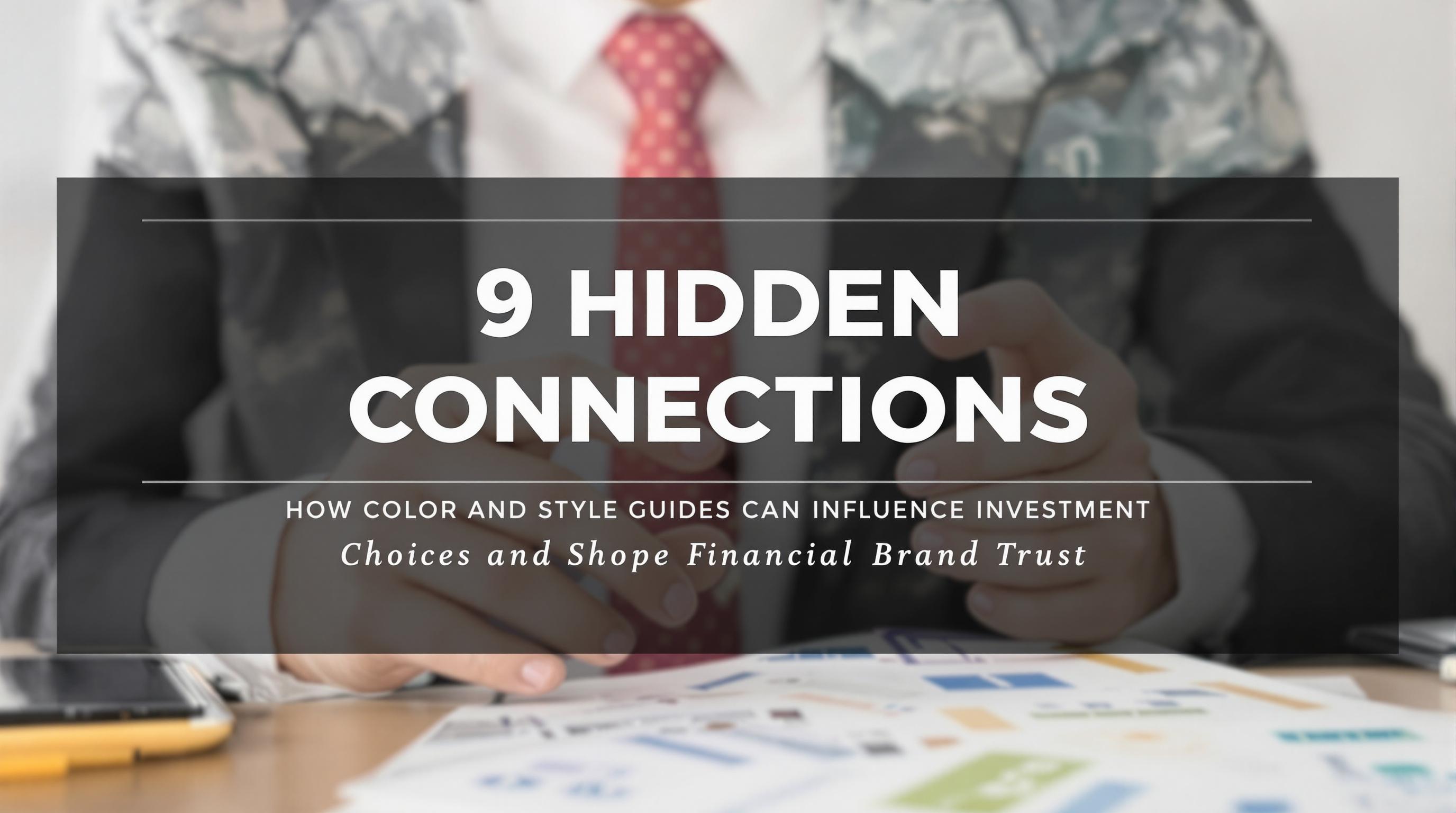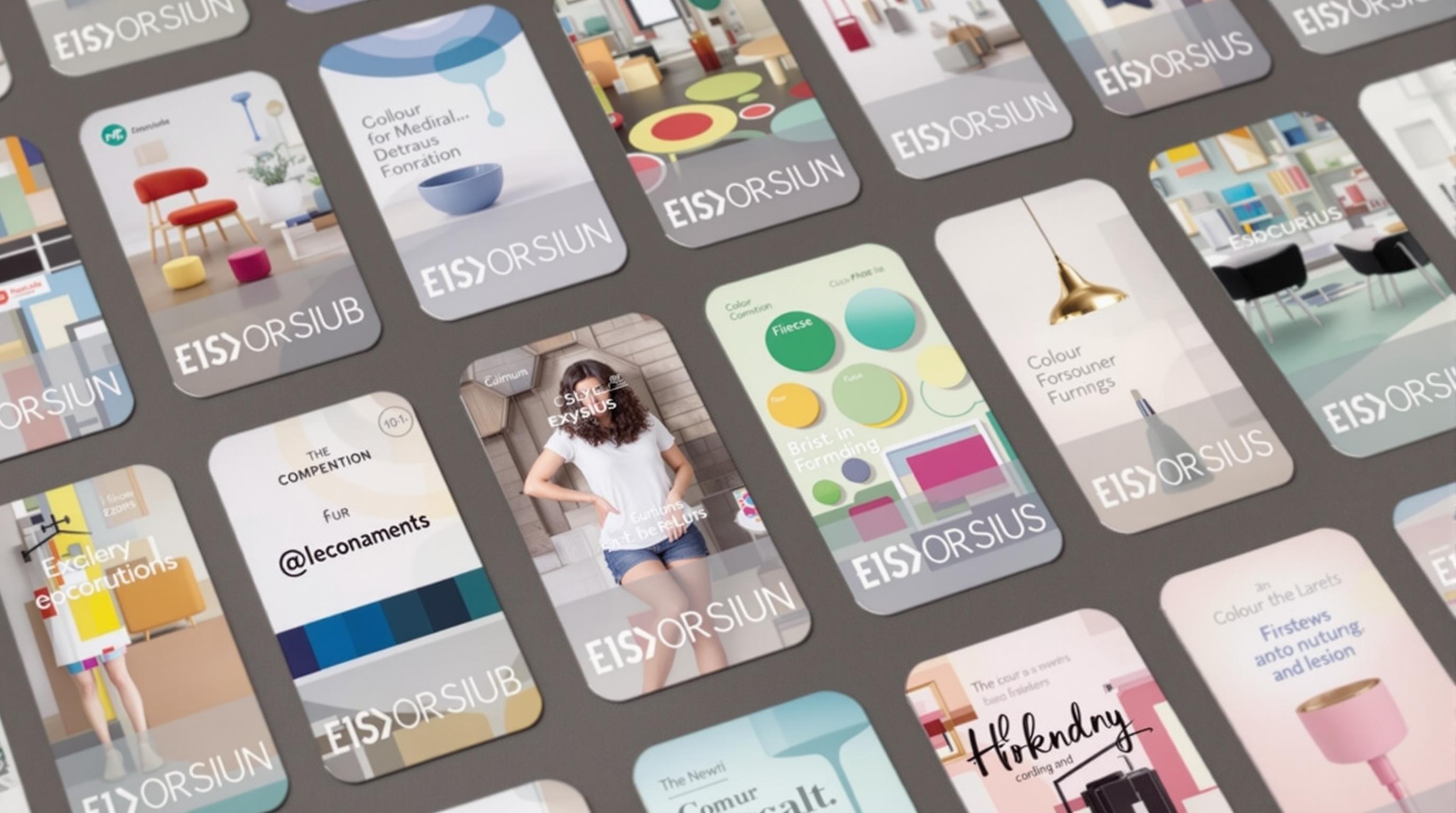Related Articles
- Bizarre Wonders: Crafting Functional Ornaments from Obsolete Household Gadgets and Oddities
- Eco-Chemistry: Innovative Projects Using Upcycled Materials from Your Kitchen for Sustainable Living
- Mystical Metamorphosis: Crafting Enchanted Home Decor from Unwanted Childhood Toys and Forgotten Doll Parts
- Color Cravings: Exploring the Unconventional Links Between Food Choices and Fashion Statements
- Hues of Controversy: The Surprising Ties Between Color Choices and Ethical Consumerism Trends
- Color Waves: Exploring the Impact of Music on Visual Aesthetics in Art and Fashion Choices
11 Surprising Ways Color and Style Guides Can Enhance Your Content Strategy and Boost Engagement in Digital Storytelling
11 Surprising Ways Color and Style Guides Can Enhance Your Content Strategy and Boost Engagement in Digital Storytelling
11 Surprising Ways Color and Style Guides Can Enhance Your Content Strategy and Boost Engagement in Digital Storytelling
1. Establishing Brand Identity
Color and style guides play a crucial role in establishing and reinforcing your brand identity. When you have a consistent visual language, your content becomes instantly recognizable, leading to stronger brand recall among your audience. Brands like Coca-Cola and McDonald's have mastered this aspect, using color palettes that trigger immediate association with their products.
Moreover, a well-defined style guide helps convey your brand’s personality. For instance, a playful and vibrant color scheme will create a different atmosphere compared to a muted, sophisticated palette. By aligning your colors and styles with your brand values, you foster emotional connections with your audience.
A strong brand identity encourages loyalty, and the consistency that color and style guides provide is essential to maintaining that loyalty. Digital storytelling becomes an act of building and nurturing a community around your brand, fostering a sense of belonging for your audience.
2. Enhancing Readability
Color and style guides also significantly enhance the readability of your content. Choosing the right color combination for text and background can make your content more engaging and easier to read. High contrast colors like dark text on a light background improve legibility, making for a more pleasant reading experience.
The typography you choose, which is often outlined in style guides, can also play a role in how easy your content is to digest. Simple, sans-serif fonts can make digital content easier to read, especially on smaller screens. This is vital in a world where mobile content consumption is surging.
Moreover, by using headings, subheadings, and bullet points in line with your style guide, you organize content in a way that guides readers through your narrative effortlessly, allowing for better retention of information.
3. Capturing Attention
Color psychology states that different colors can evoke different emotions. By strategically using colors in your content, you can capture and maintain the reader's attention. For instance, reds and oranges can create a sense of urgency, while blues and greens can calm and promote trust.
Your style guide can help you strategically select visual elements that will draw readers in. By utilizing visually striking images that complement your color scheme, your content becomes more enticing, encouraging users to engage further with your storytelling.
Additionally, consistent use of colors tied to your storytelling can lead readers to develop specific associations with your brand, enhancing engagement levels over time as they come to expect and crave that recognizable aesthetic.
4. Enhancing Emotional Connection
The colors you choose can significantly impact the emotional tone of your content. Warmer colors, such as reds and yellows, can elicit feelings of excitement and warmth, while cooler colors may create calmness and tranquility. By aligning your color choices with the mood you wish to evoke in your storytelling, you create a deeper emotional connection with your audience.
Style guides that prioritize emotional associations can lead to more relatable and authentic storytelling. By fostering vulnerability and resonance, you can create content that goes beyond simple information dissemination and taps into shared human experiences.
Ultimately, fostering an emotional connection through color and style strengthens reader engagement, as individuals prefer to interact with brands that understand their feelings and needs. This emotional investment leads to more meaningful content experiences for your audience.
5. Streamlining Content Creation
A color and style guide streamlines the content creation process by providing a clear framework that content creators can refer to. Instead of spending time debating color choices or fonts, teams can adhere to established guidelines, which boosts efficiency and reduces decision fatigue.
With a sound guide in place, your team can focus on storytelling rather than aesthetics. Content creators can put their creative energies toward crafting beautiful narratives, leading to higher quality and more engaging content than if they were bogged down in the minutiae of design.
This efficiency can also lead to faster project completion times, keeping your content production pipeline full and ensuring a steady stream of stories. Readers remain engaged when they know regular content is on the horizon.
6. Encouraging Social Sharing
Visually appealing content is more likely to be shared on social media. Consistent use of colors and styles helps create shareable graphics, images, and videos that stand out in crowded feeds. Engaging visuals are crucial for grabbing attention before converting viewers into readers.
By employing your color palette in graphics, your brand becomes more recognizable in social shares. People are more inclined to share content from brands they can easily identify, increasing overall reach and engagement.
An effective style guide can also dictate how collaborated or co-branded content is presented, enabling seamless integration and bold visuals that attract shares. This collaborative effort allows for broader community engagement, leading to more traffic to your primary content platform.
7. Creating Visual Hierarchy
A well-structured color and style guide aids in establishing visual hierarchy within your content. By strategically employing different styles and colors, you communicate the importance of various elements, guiding the reader's focus through the story.
For instance, highlighting key quotes or statistics in a distinct color draws attention to critical insights, allowing the viewer to quickly discern the message. This visual differentiation ensures that essential information is not only seen but remembered.
Visual hierarchy helps to create an intuitive reading experience, ensuring that your audience engages with the core elements of your storytelling, thus enhancing their overall comprehension and enjoyment.
8. Boosting SEO Performance
Color and style choices can also influence SEO performance. Engaging visuals and high-quality color schemes can lead to lower bounce rates, as users are more likely to stay and explore content that is visually stimulating. This can enhance your site's performance in search engine rankings.
Furthermore, rightly optimized images and infographics can improve your content's shareability, thereby enhancing backlinks and organic reach. Each element of your style guide can play a role in ensuring that visuals are not just attractive but also optimized for SEO.
As audiences respond positively to well-designed content, search algorithms take note. Therefore, an effective color and style guide acts as a multiplier in your content strategy, affecting visitor retention and SEO simultaneously.
9. Facilitating Accessibility
Creating inclusive content is essential, and color and style guides can significantly facilitate accessibility. By understanding and implementing color contrast guidelines, you cater to visually impaired read, ensuring that all users can enjoy your narratives.
Font decisions based on size and style can improve readability for those with dyslexia or other reading difficulties. By incorporating clear guidelines for accessibility, you help ensure your storytelling is inclusive and universally enjoyable.
Accessible content not only broadens your audience but also enhances your brand reputation as socially responsible. This commitment to inclusivity resonates deeply with users who value brands that prioritize accessibility in their content.
10. Encouraging User Interaction
Incorporating interactive elements into your storytelling, such as polls or quizzes, encourages user interaction and engagement. Color and style guides can help ensure that these elements align with your overall aesthetic, leading to a cohesive user experience.
Interactive content that visually engages participants increases the likelihood of participation, fostering a sense of community among your readers. When users feel connected and involved, they are more likely to share their experiences, further boosting engagement.
Using consistent styling and color patterns across interactive elements makes them more approachable and enjoyable, encouraging users to engage more deeply with your content and brand.
11. Fostering Brand Trust
Consistency across visual elements builds trust among your audience. When users encounter content that adheres to your color and style guidelines, they are more likely to perceive your brand as professional and credible. This trust is essential for fostering long-term relationships with your readership.
Furthermore, a familiar visual language facilitates brand recognition. When users can easily identify your content in a crowded digital space, they are more likely to engage with it, further consolidating their trust and loyalty.
Ultimately, as trust grows through consistent aesthetic experiences, your audience is more likely to engage with your storytelling, share it with others, and, in the long run, become advocates for your brand.




